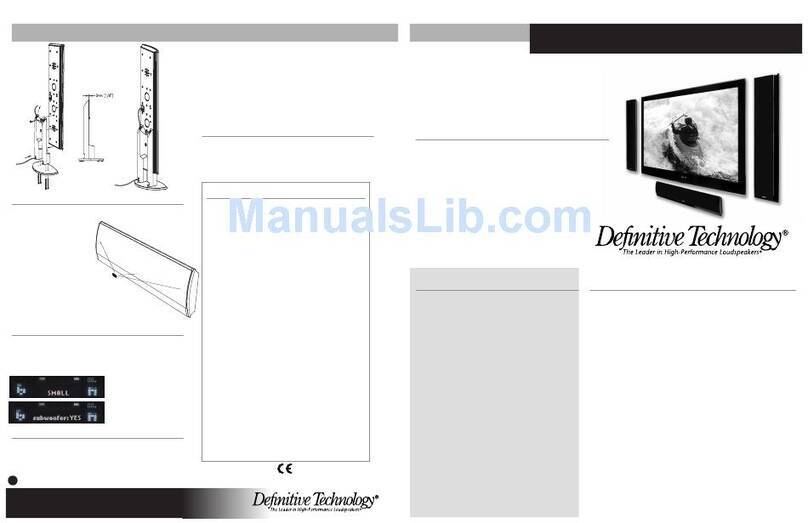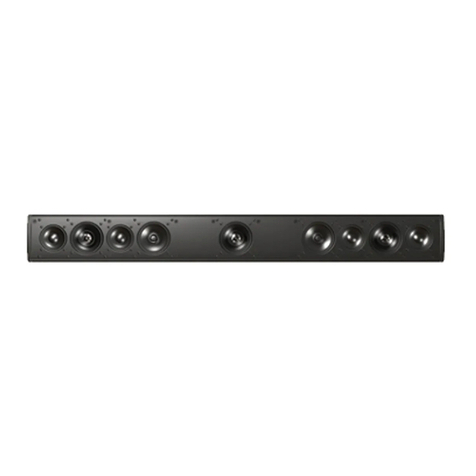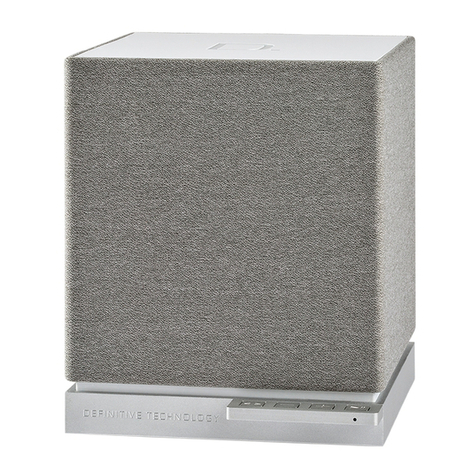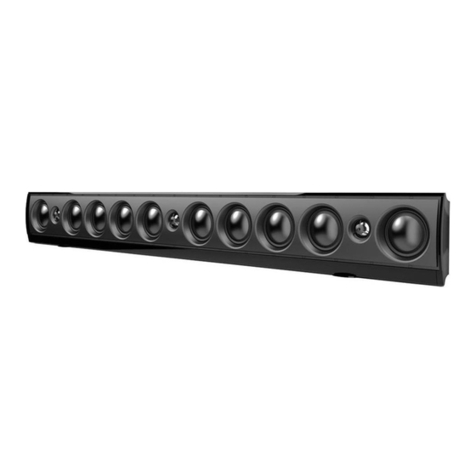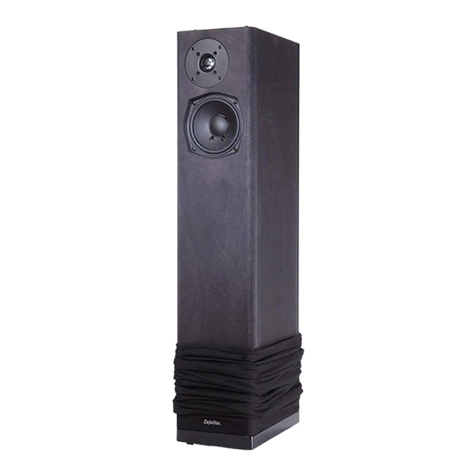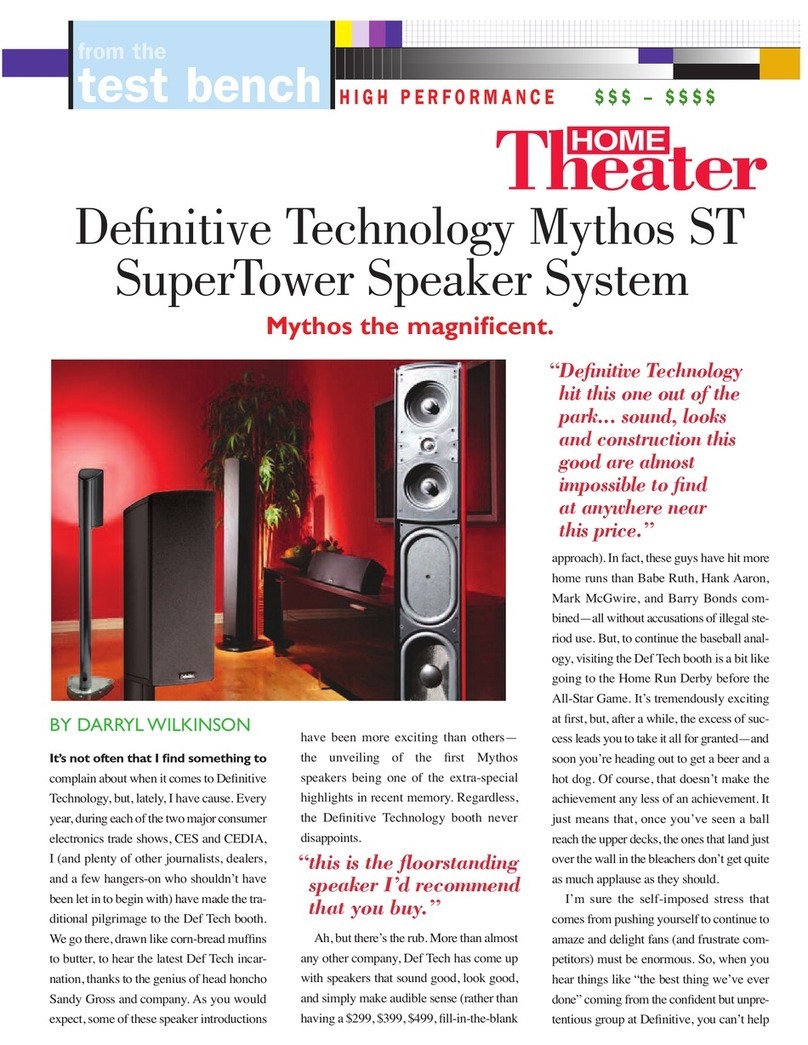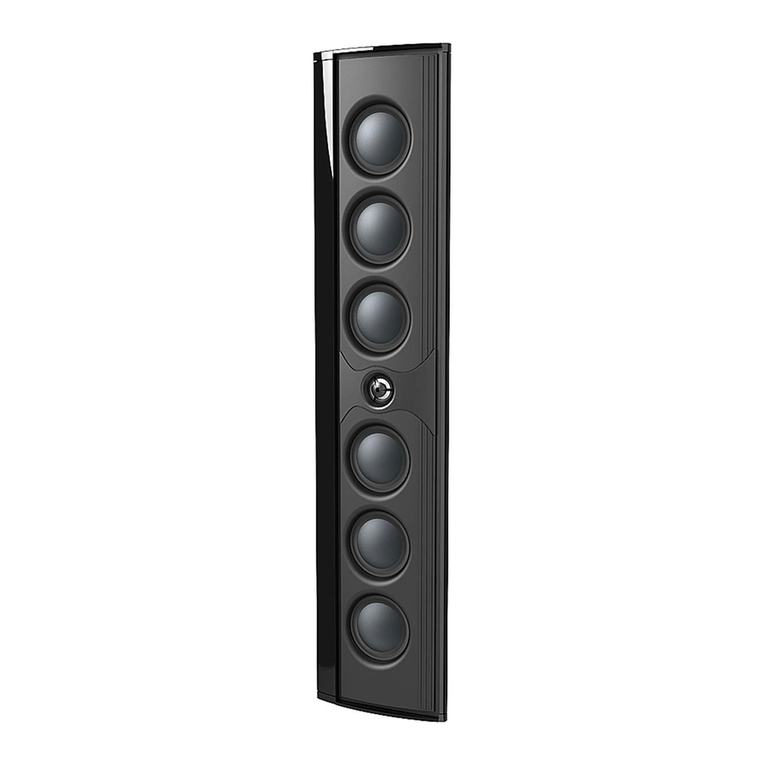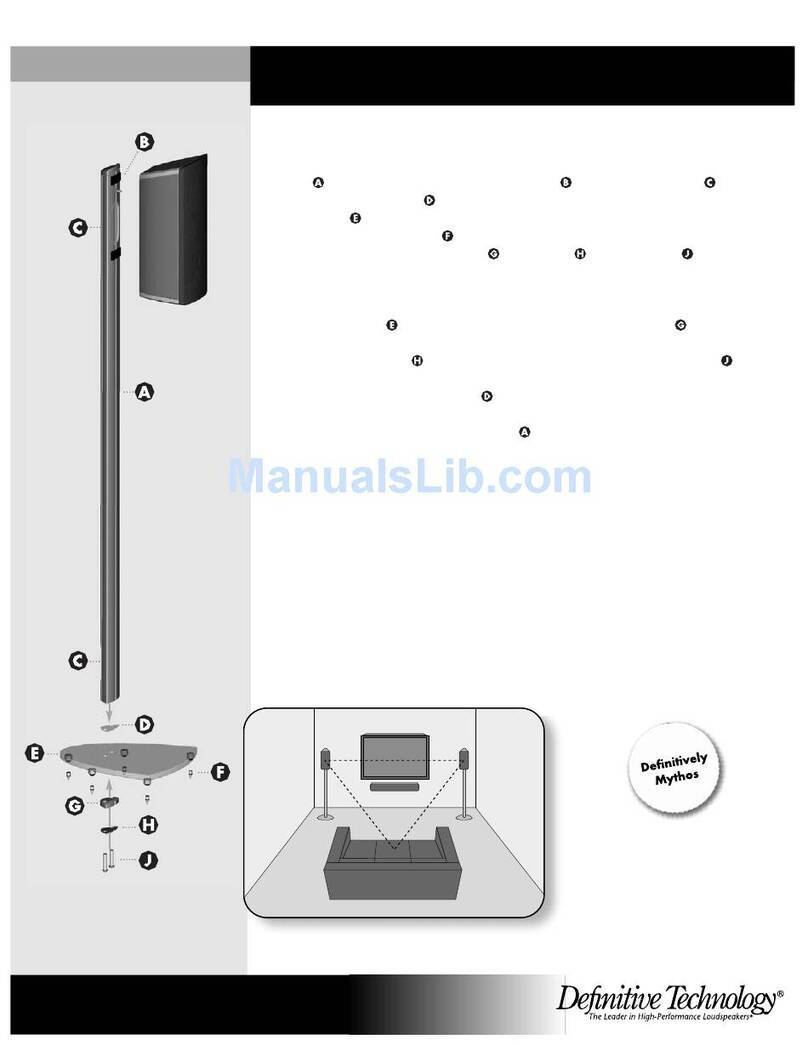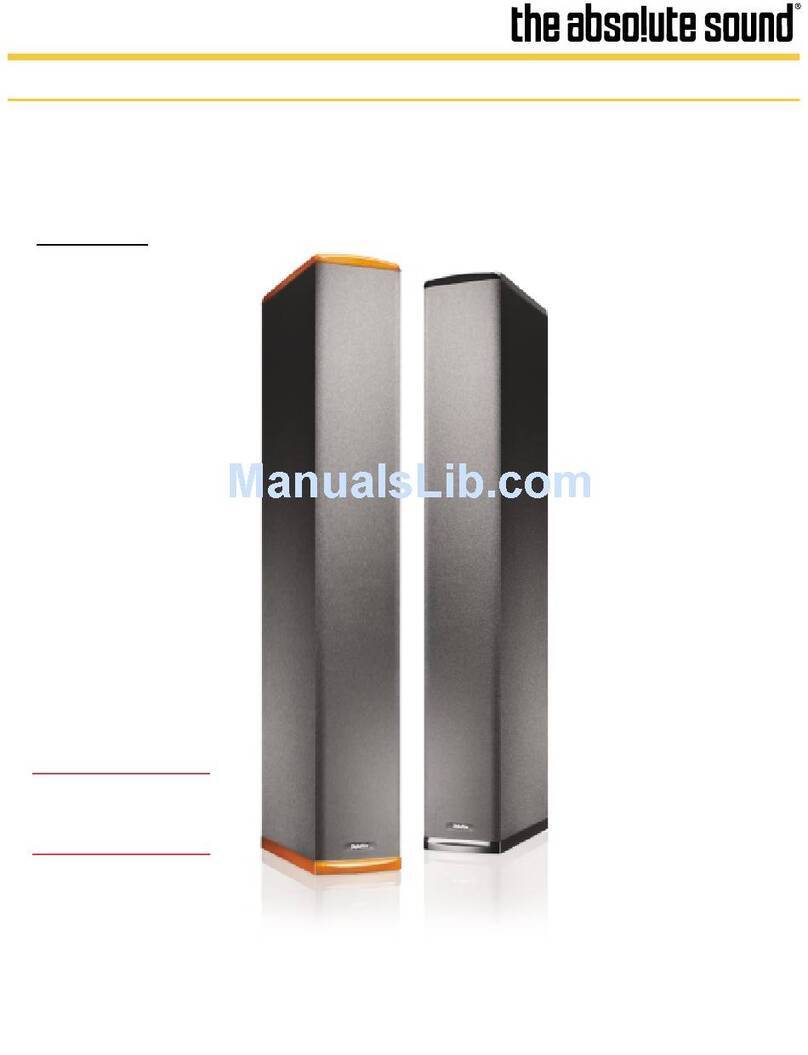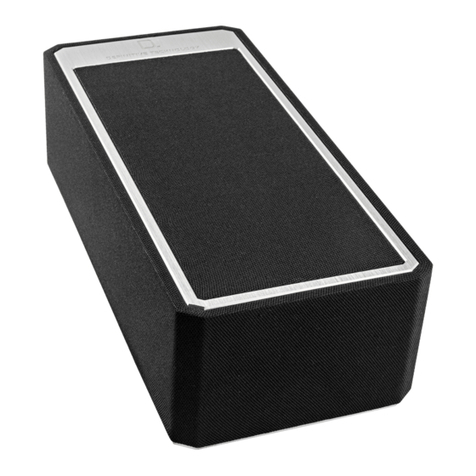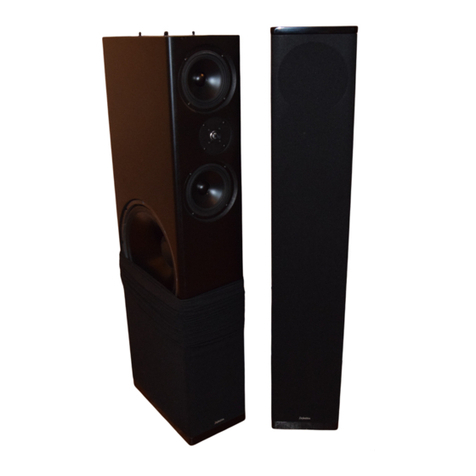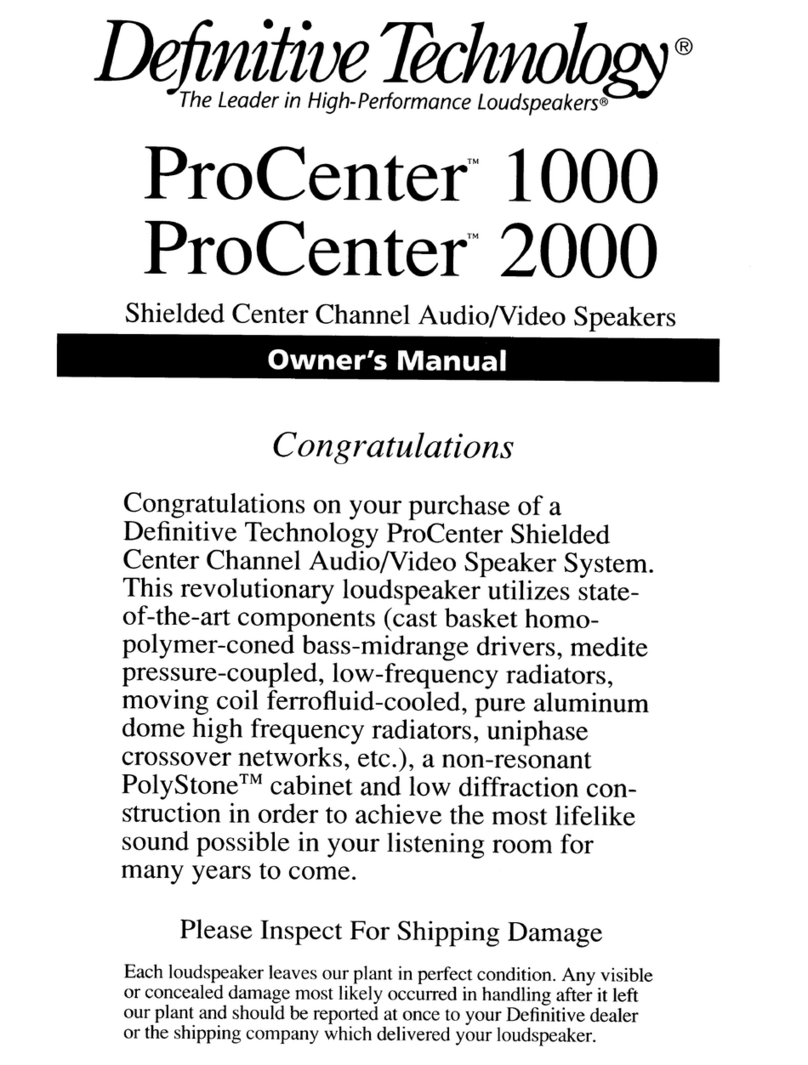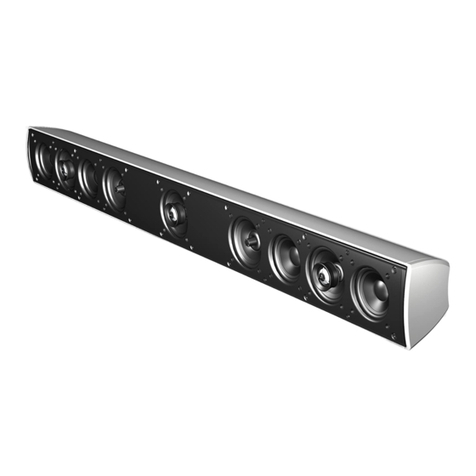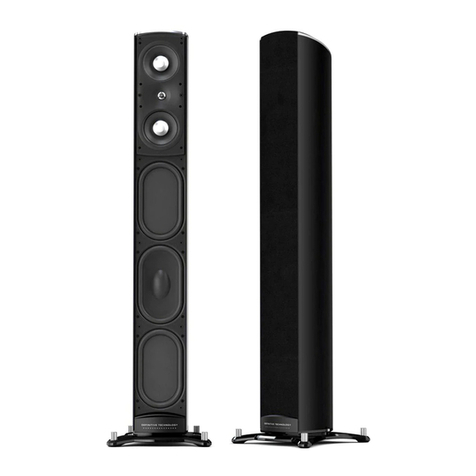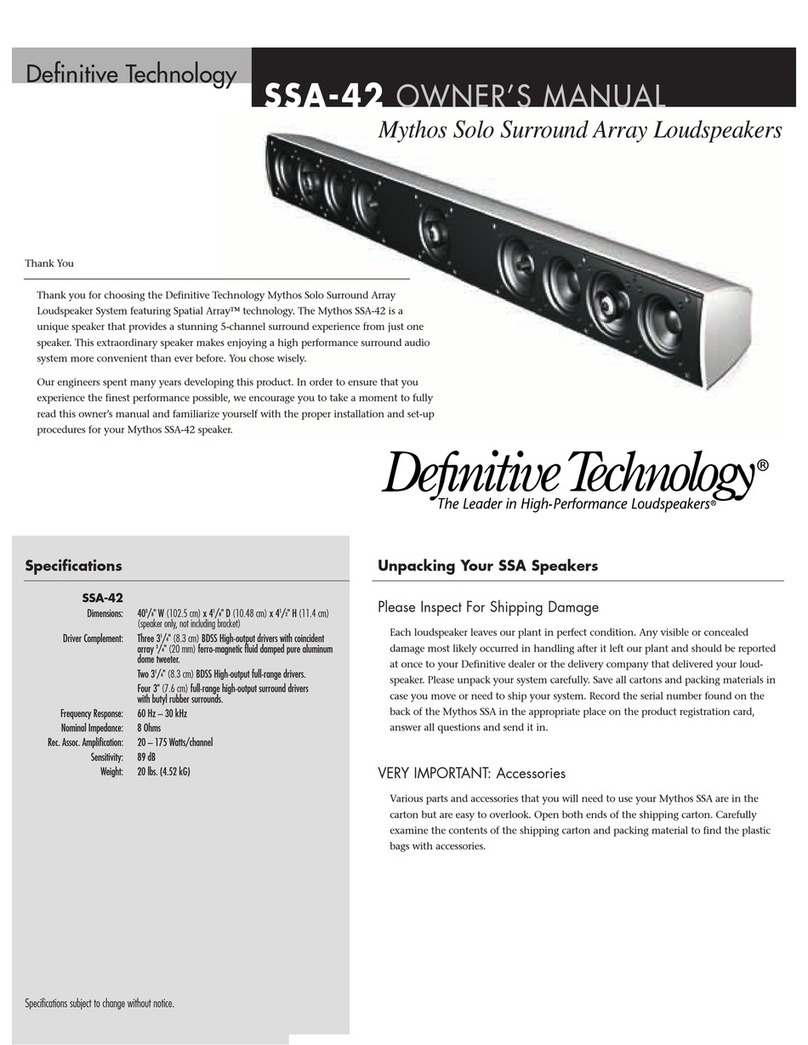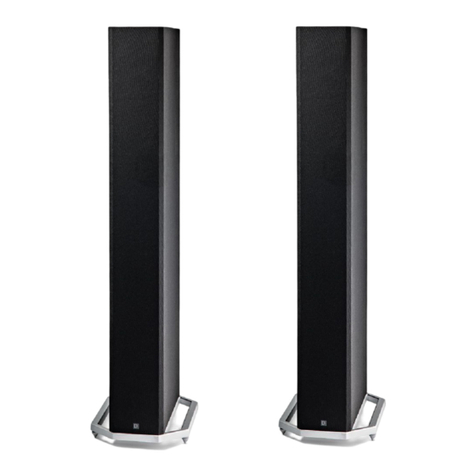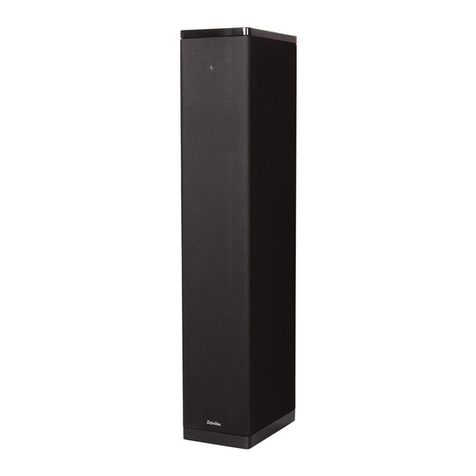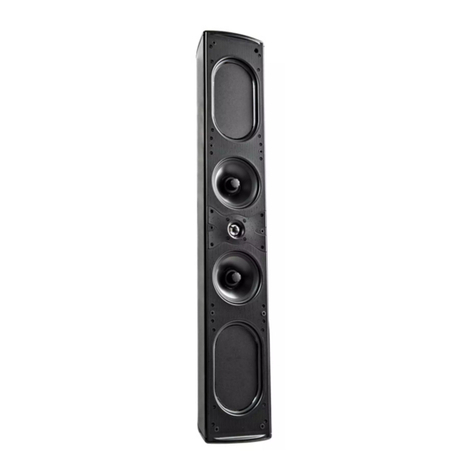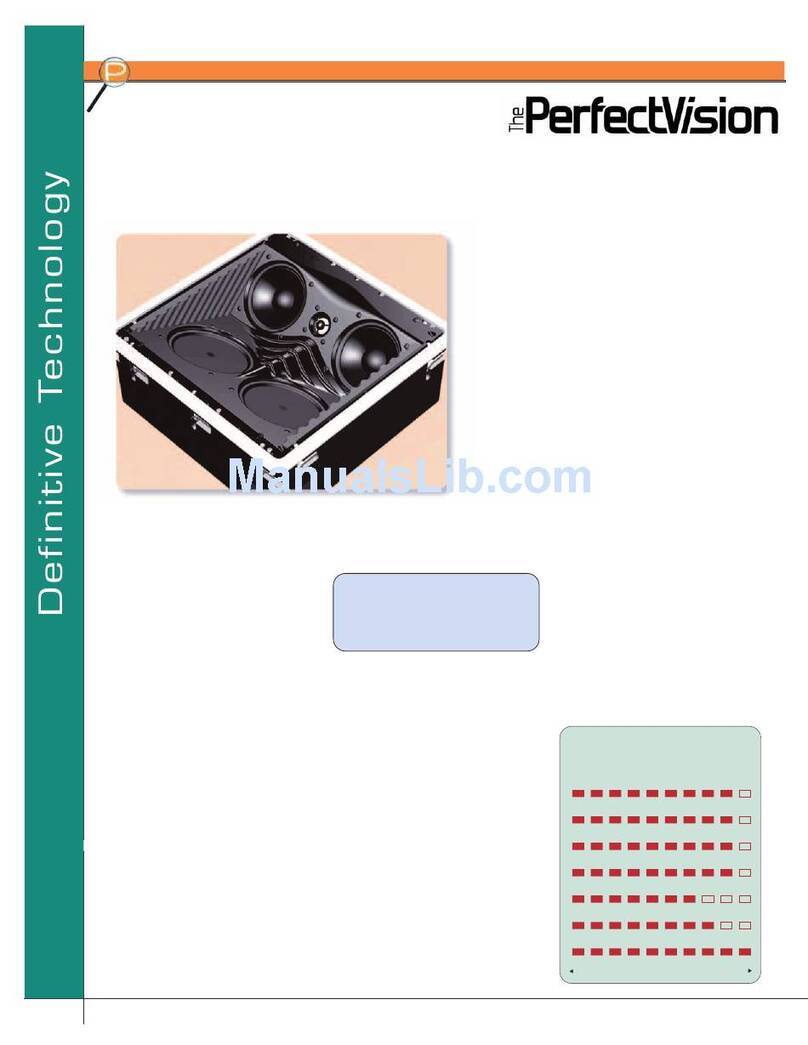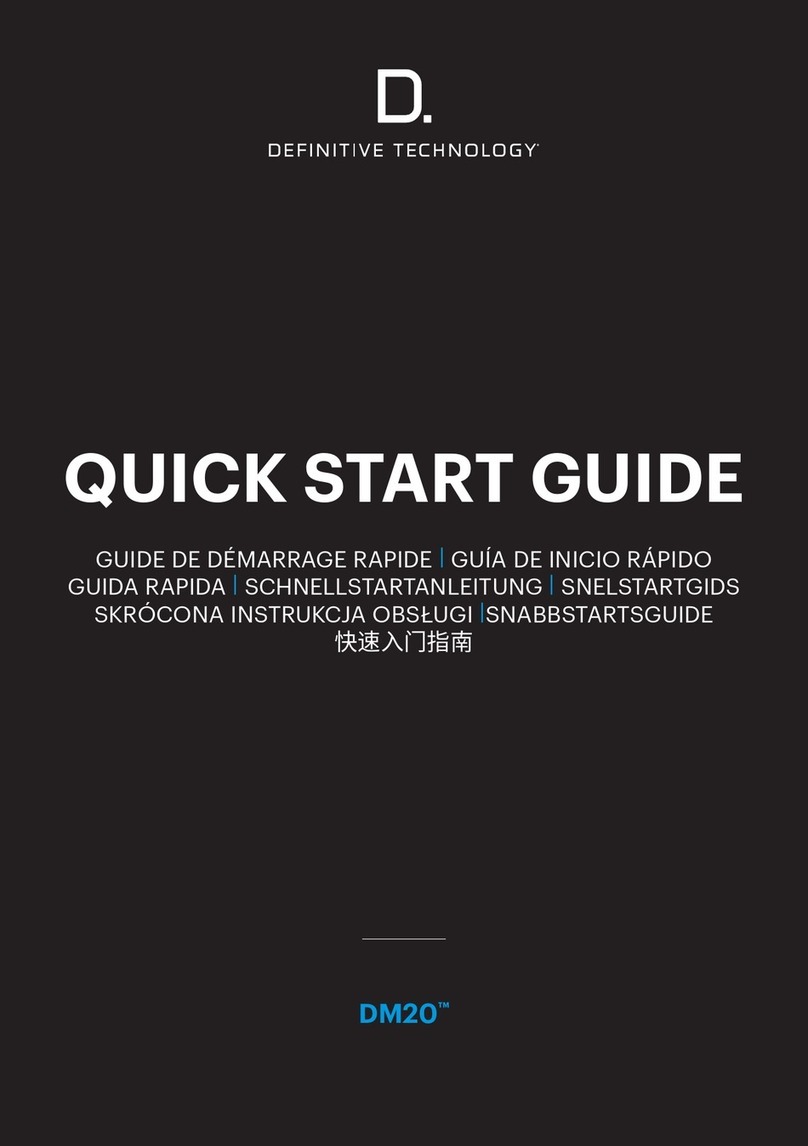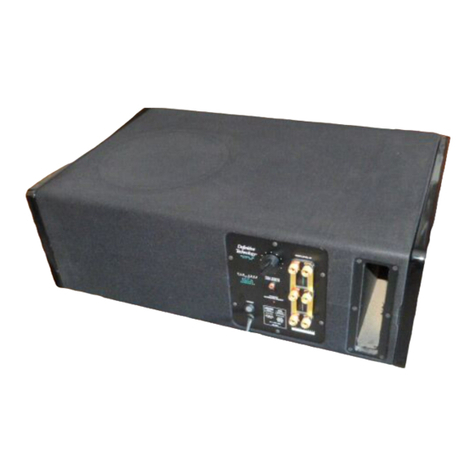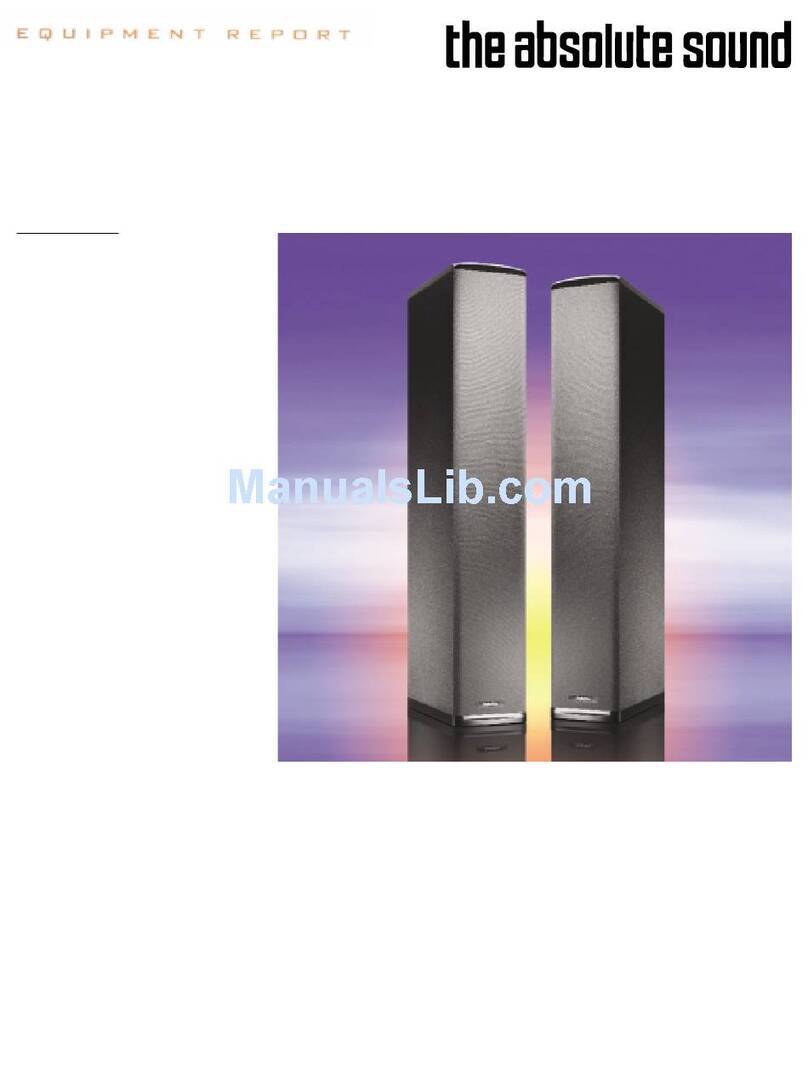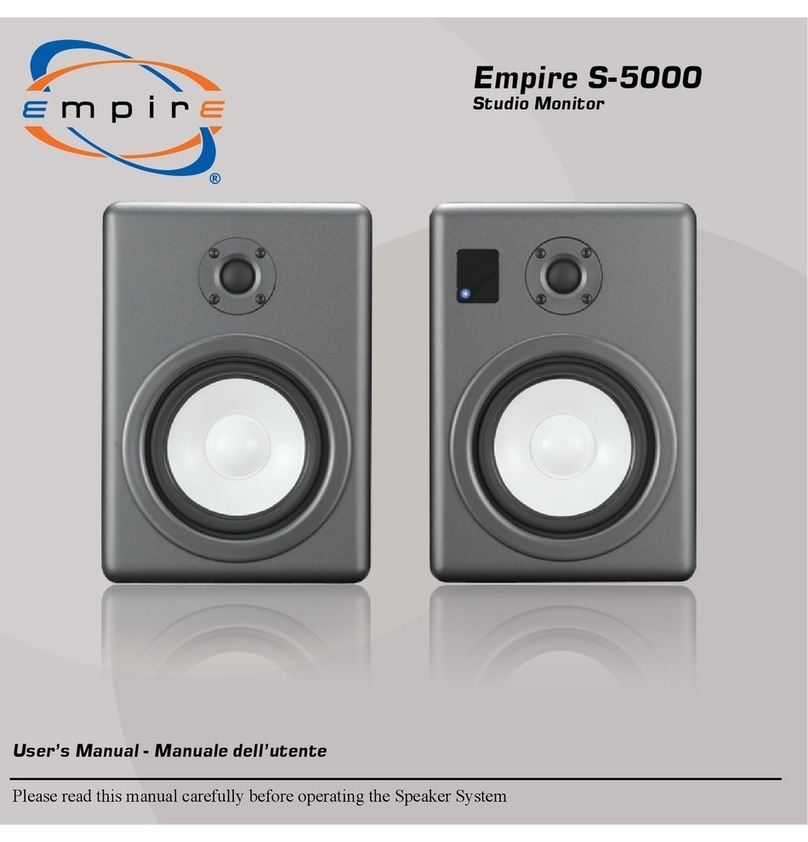
nectors—multiway binding posts
spaced to accept dual banana plugs—
are in the bottom plate of the cabinet,
which is slotted at the rear to accom-
modate the connecting cables.
We placed the BP8 speakers about 2
to 3 feet from the side walls and 18
inches from the front wall of the
room, angled slightly inward, as sug-
gested by the manufacturer. Their
“raw” room response, averaged for
both speakers, was unusually uniform
across the full audio range, even in
the bass region where room-boundary
effects are usually quite prominent.
The close-miked response of the
front woofer and its port (the rear
response was identical) was flat with-
in ±3 dB from 30 Hz to about 3 kHz.
The composite frequency response,
formed by splicing the woofer mea-
surement to the averaged room curve
corrected for room absorption at high
frequencies (they overlapped for
about three octaves, from 300 Hz to
nearly 3 kHz), was flat within ±3 dB
from 30 Hz to 20 kHz. Quasi-ane-
choic MLS response measurements
showed an overall rise of 5 dB from
about 1.2 to 15 kHz, with a couple of
±2-dB variations along the way.
The high-frequency horizontal dis-
persion of the system, over a 45-
degree angle to its forward axis, was
typical of systems using a 3/4-inch
tweeter. There was less than a ±2-dB
change up to 10 kHz, above which the
off-axis output fell by about 6 dB at
15 kHz and 12 dB at 20 kHz.
The system’s sensitivity was 90 dB,
as rated. At a standard 2.83-volt input
(equivalent to 1 watt into 8 ohms), the
woofer distortion was between 1.5 and
2 percent in the upper part of its range
(200 Hz to 2 kHz), reaching 5 percent
at 53 Hz and 10 percent at 30 Hz.
Definitive Technology refers to the
impedance of the BP8 and its com-
panion bipolar systems as “compati-
ble with 8-ohm outputs.” That charac-
terization is probably justified by the
system’s relatively high sensitivity,
which enables normal listening levels
to be generated with less input power
than many comparably priced speak-
ers need. Nonetheless, we measured a
minimum impedance of 3.2 ohms at
240 Hz and dips to approximately 4
ohms at several other frequencies.
The crossover to the tweeter appeared
to be at about 3 kHz, judging from
impedance and group-delay measure-
ments.
Single-cycle tone-burst measure-
ments indicated that the BP8 has an
exceptional ability to absorb high-
power transients without damage or
audibly offensive distortion. We were
able to “bottom” the woofer cones at
100 Hz with an input of 785 watts,
although they absorbed 1,100 watts at
1 kHz (the amplifier’s maximum into
the speaker’s 5.5 ohm impedance at
that frequency) without difficulty.
The tweeter, like most, was not dam-
aged by high burst levels at 10 kHz,
and the amplifier clipped at 1,470
watts into its 6.7-ohm impedance.
Listening to music via the BP8
speakers produced, in addition to the
expected performance, at least one
surprise. Although solidly built, with
internal bracing, and 1-inch-thick
high-density fiberboard front and
back panels, the BP8 looks very com-
pact, and regardless of how it per-
forms in the upper octaves, one does
not normally expect a speaker of its
modest proportions to fill the room
with deep bass. Even when close-
miked woofer measurements suggest
extended bass response from such a
speaker, it will seldom be capable of a
really satisfying output level at the
bottom. After all, that is why we have
subwoofers!
To get right to the point, the BP8
puts out enough clean sound in the
30- to 35-Hz region to create a room-
filling, skin-tingling quality that one
does not expect (and very rarely expe-
riences) from an inconspicuous col-
umn and a pair of small cone drivers.
To be sure, adding a good subwoofer
can still make a real difference—but
only with program material that con-
tains significant deep bass in the first
place. For most of what we think of as
bass, down to 40 Hz or so, these
speakers need no assistance.
Their imaging was excellent and
often included the sense of space and
“air” that is one of the desired benefits
of a bipolar design. These speakers
“grow on you” as you live with them
(in contrast to some that outgrow their
welcome rapidly). Considering its
performance, modest size and cost,
and ability to blend with almost any
decor, we consider the Definitive
Technology BP8 an outstanding value
among floor-standing loudspeakers.
Reprinted with permission from the December 1994 issue of
STEREO REVIEW magazine. Copyright © 1994 by Hatchette
Filipacchi Magazine Inc. All Rights Reserved.
TEST REPORTS
11433 Cronridge Drive, Owings Mills,
MD 21117 USA, (410) 363-7148
“…room-filling, skin-tingling quality…”
“The BP8’s room response, aver-
aged for both speakers, was
unusually uniform across the full
audio range, even in the bass. ”
“…flat within ±3 dB from 30
Hz to 20 kHz.”
“…we consider the Definitive
Technology BP8 an outstand-
ing value among floor-standing
loudspeakers.”
“…the BP8 puts out enough
clean sound in the 30- to 35-Hz
region to create a room-filling,
skin-tingling quality that one
does not expect (and very
rarely experiences)…”
The BP8 Home Theater System
For a perfectly matched, award-winning
home theater system, combine the BP8s
with Definitive’s bipolar surround speakers
(BP1s or BP2s), a Grand Prix Award win-
ning center channel (C1 jr, C1 or C/L/R
1000) and a Grand Prix Award winning
powered subwoofer (PF 15, PF 1500 or PF
1800). The absolutely breath-taking sound
offered by all of Definitive’s complete home
theater systems is guaranteed to make
music and movies come alive in your home.
